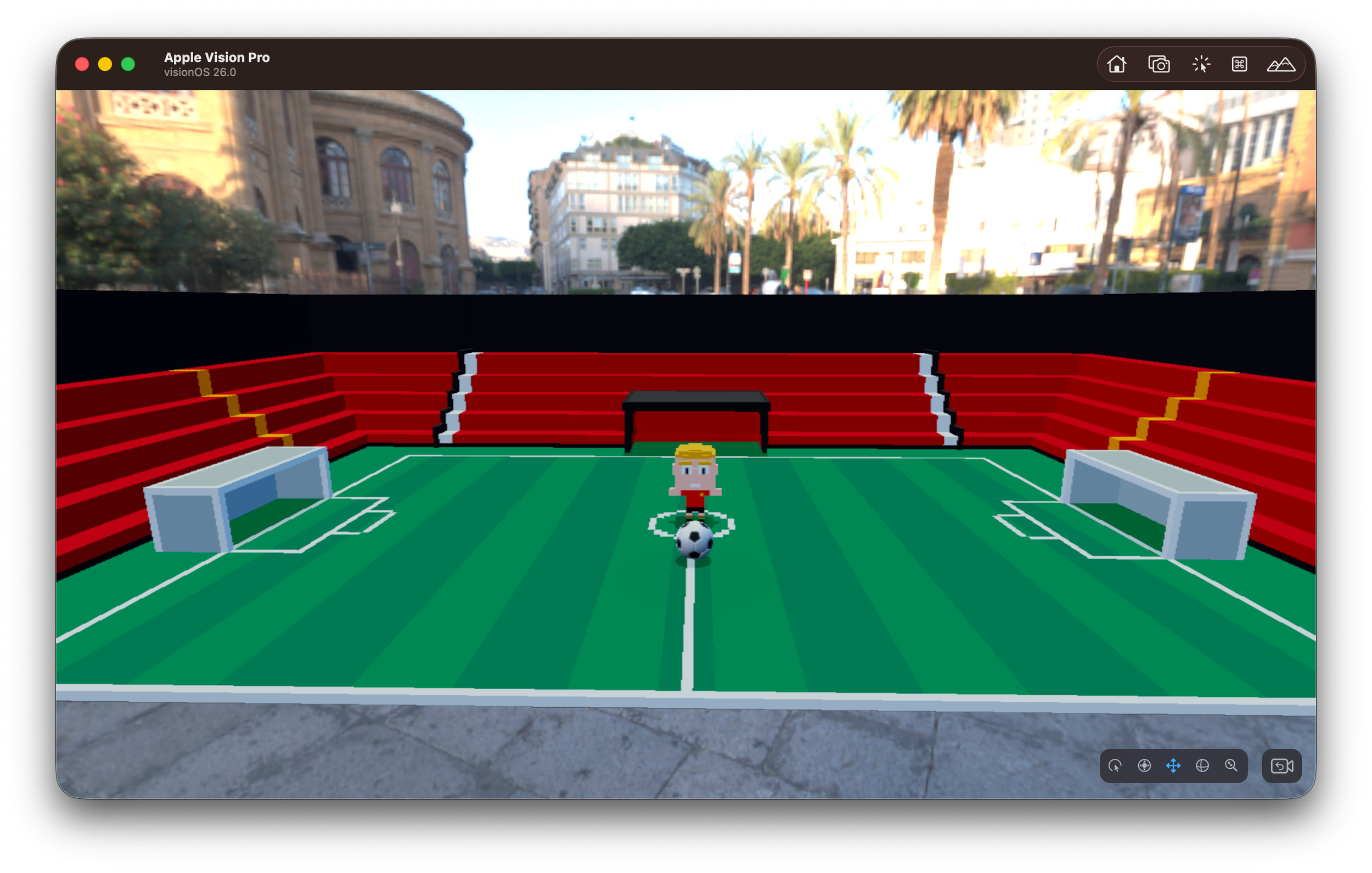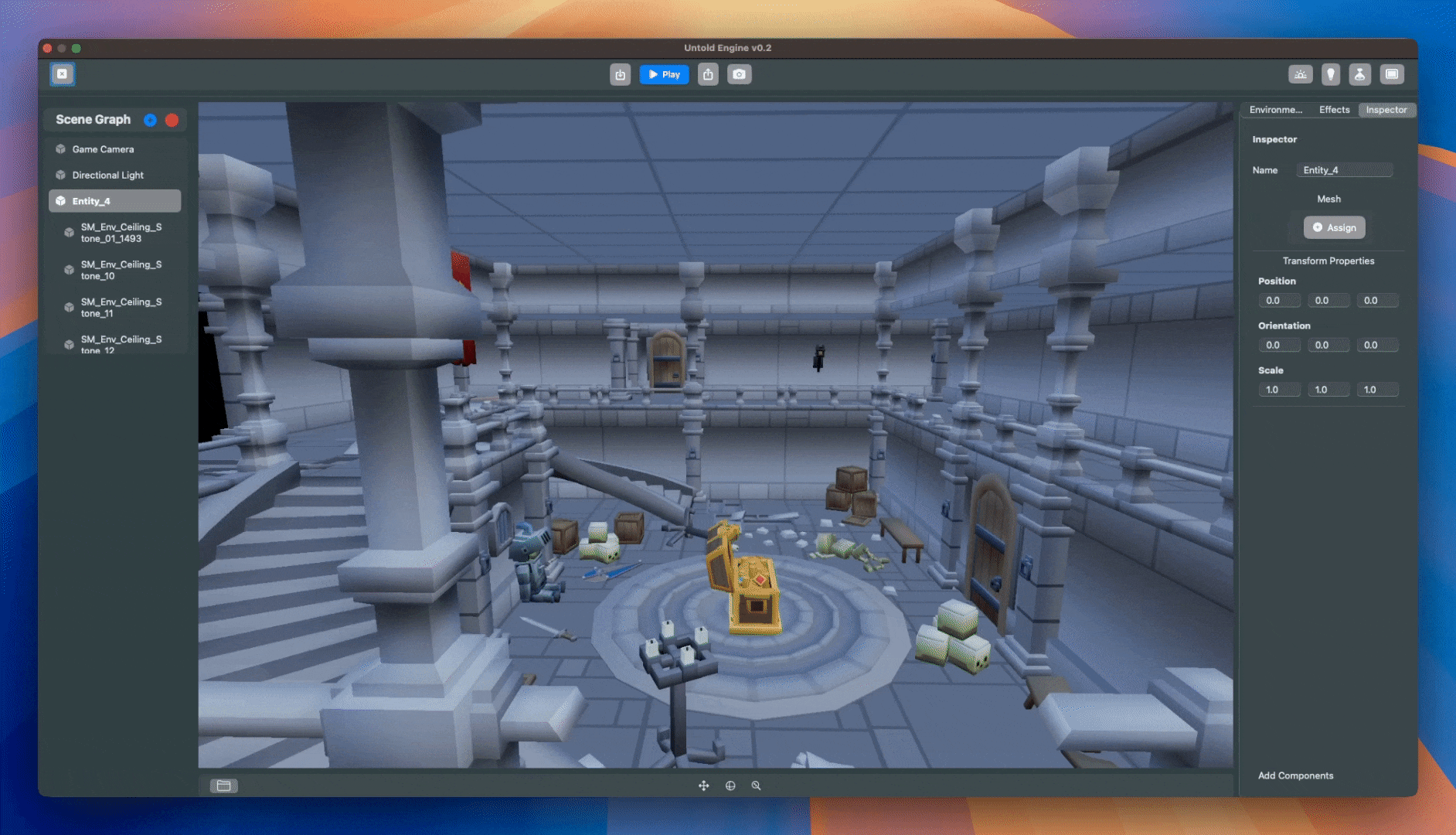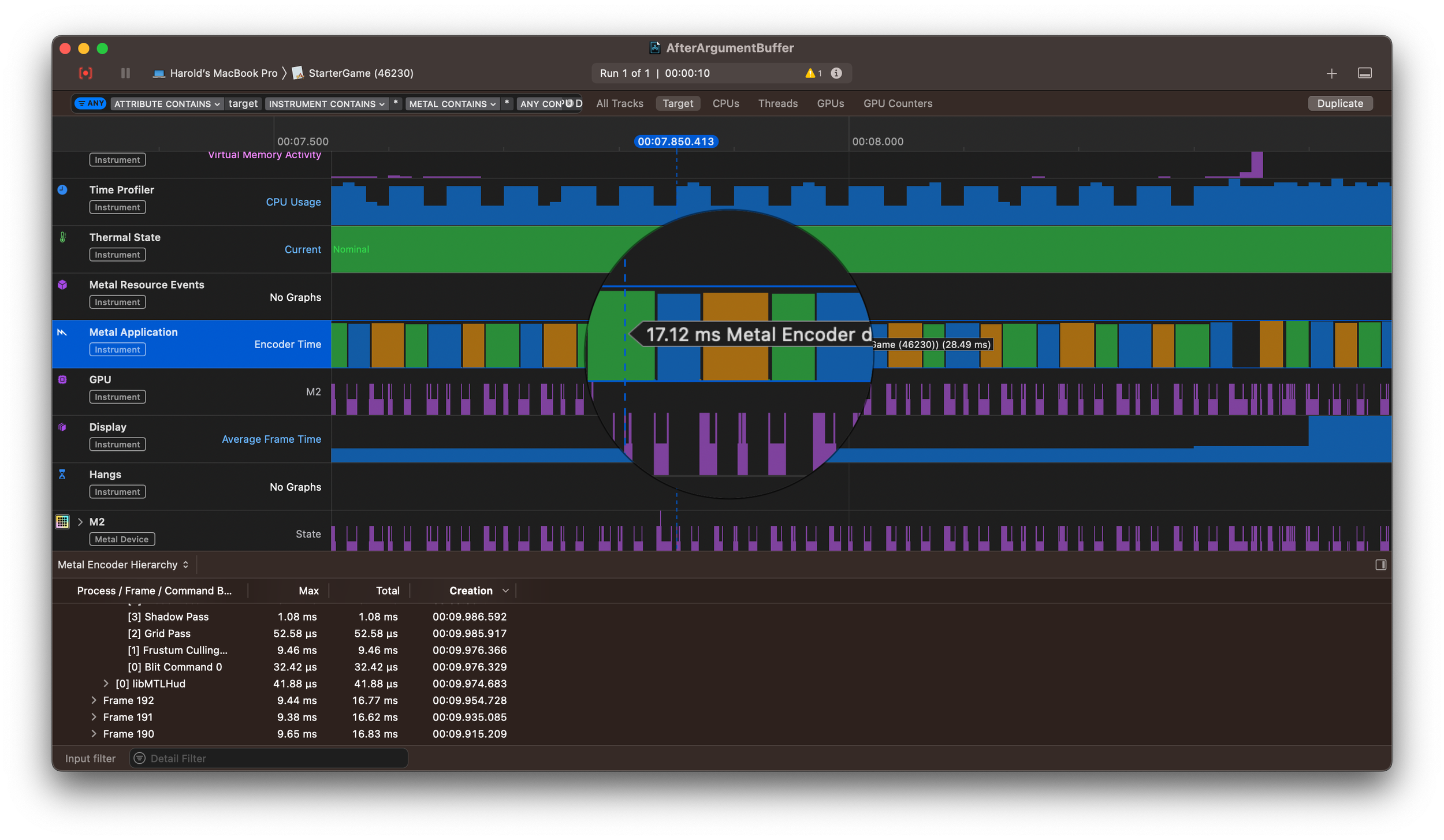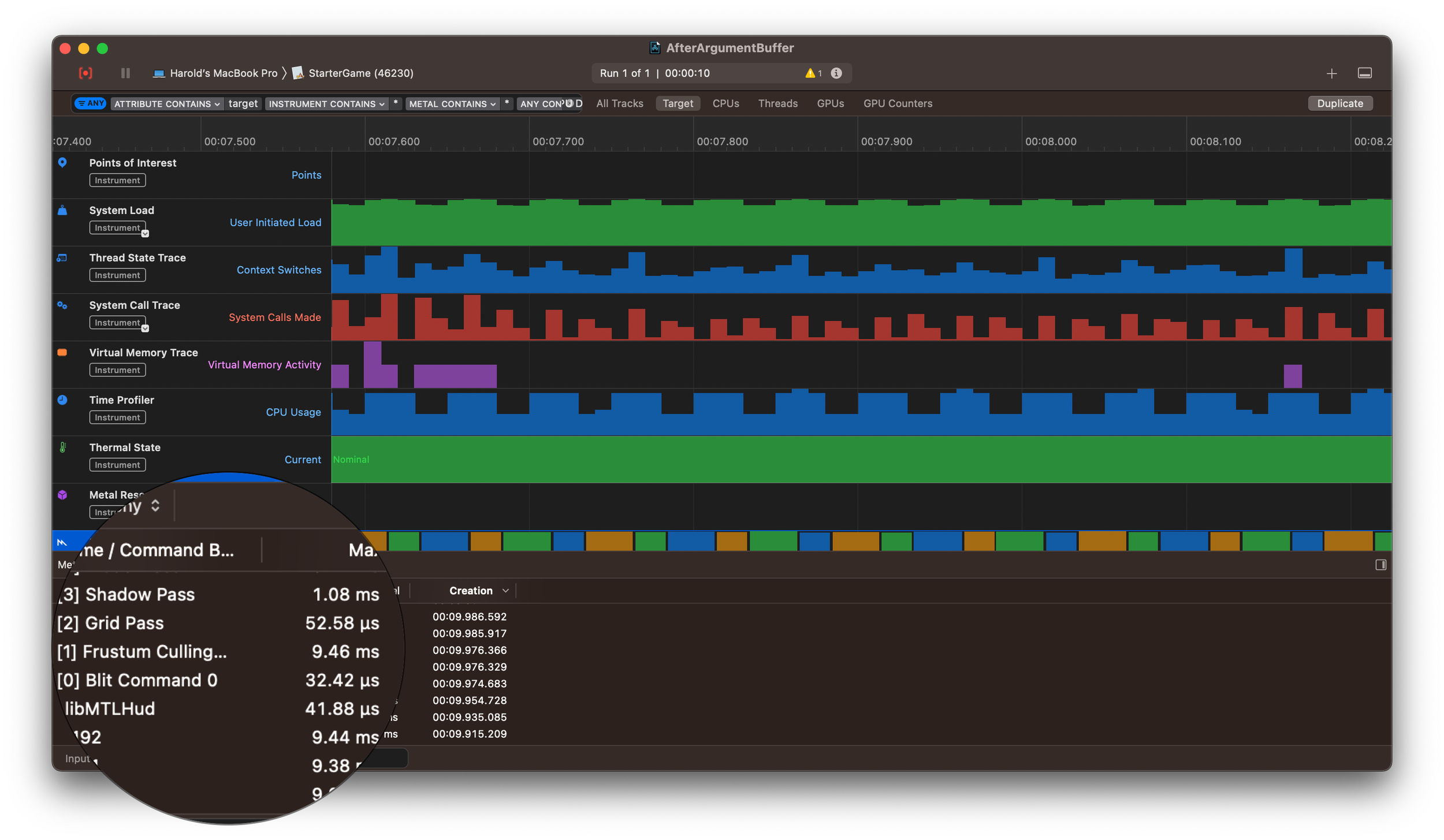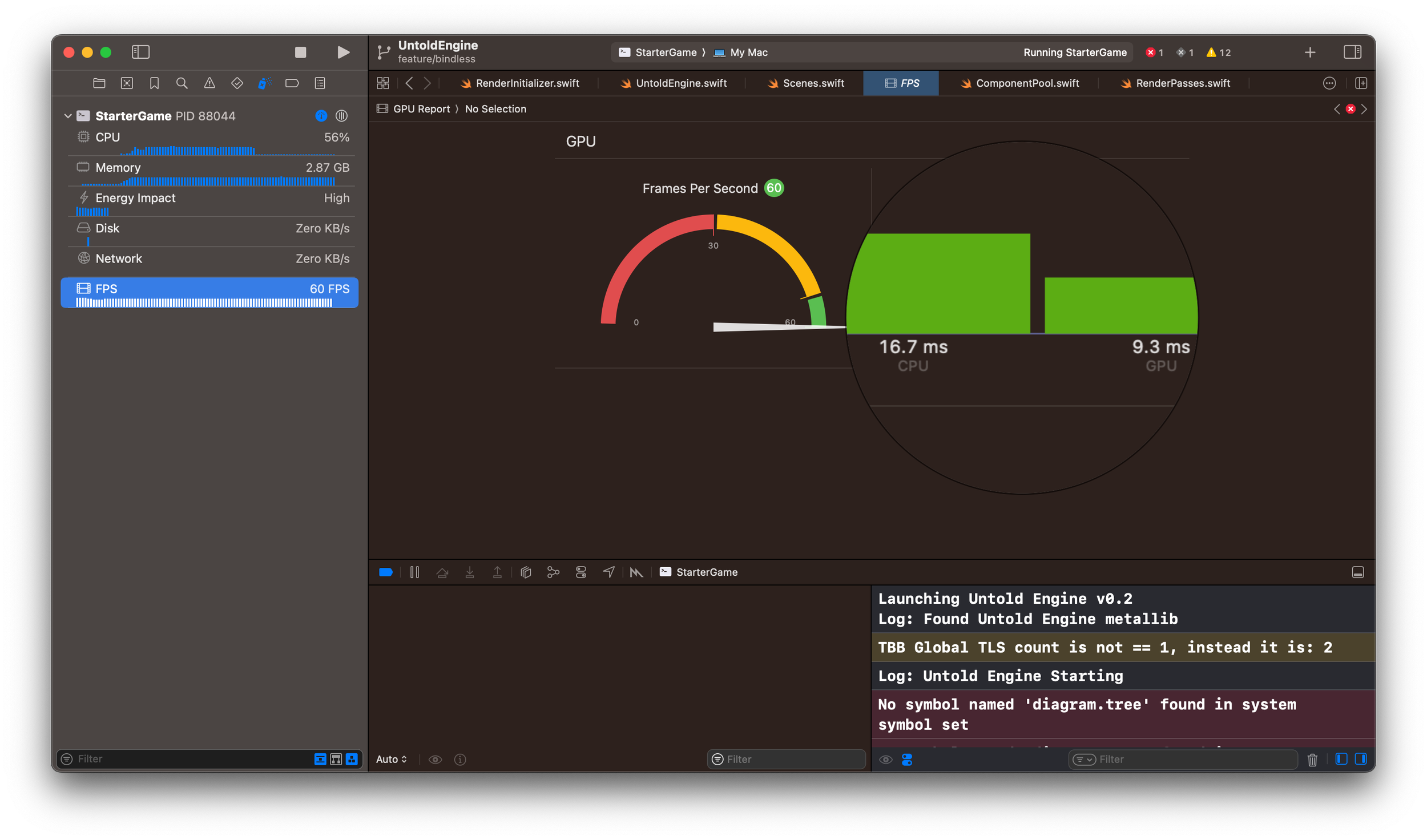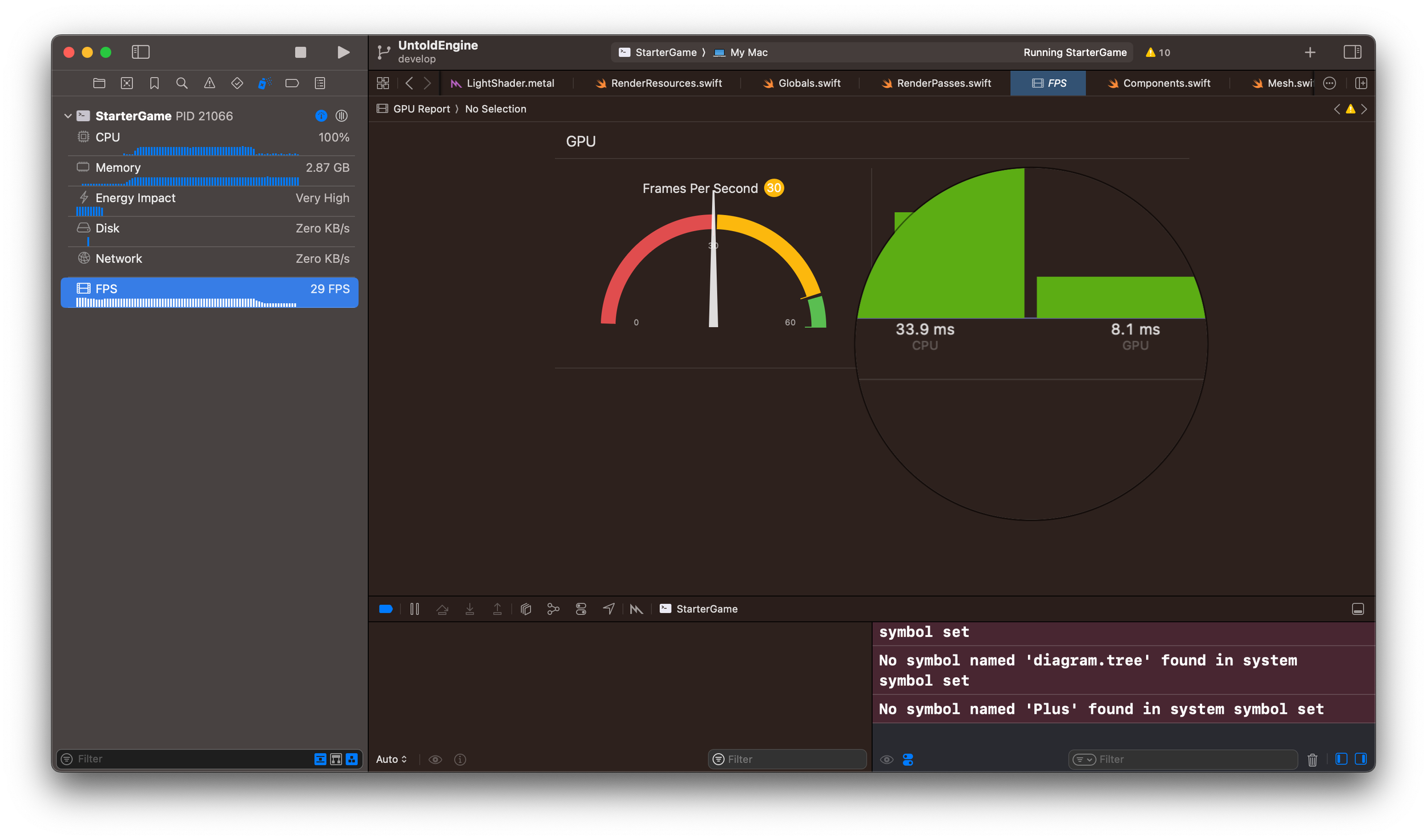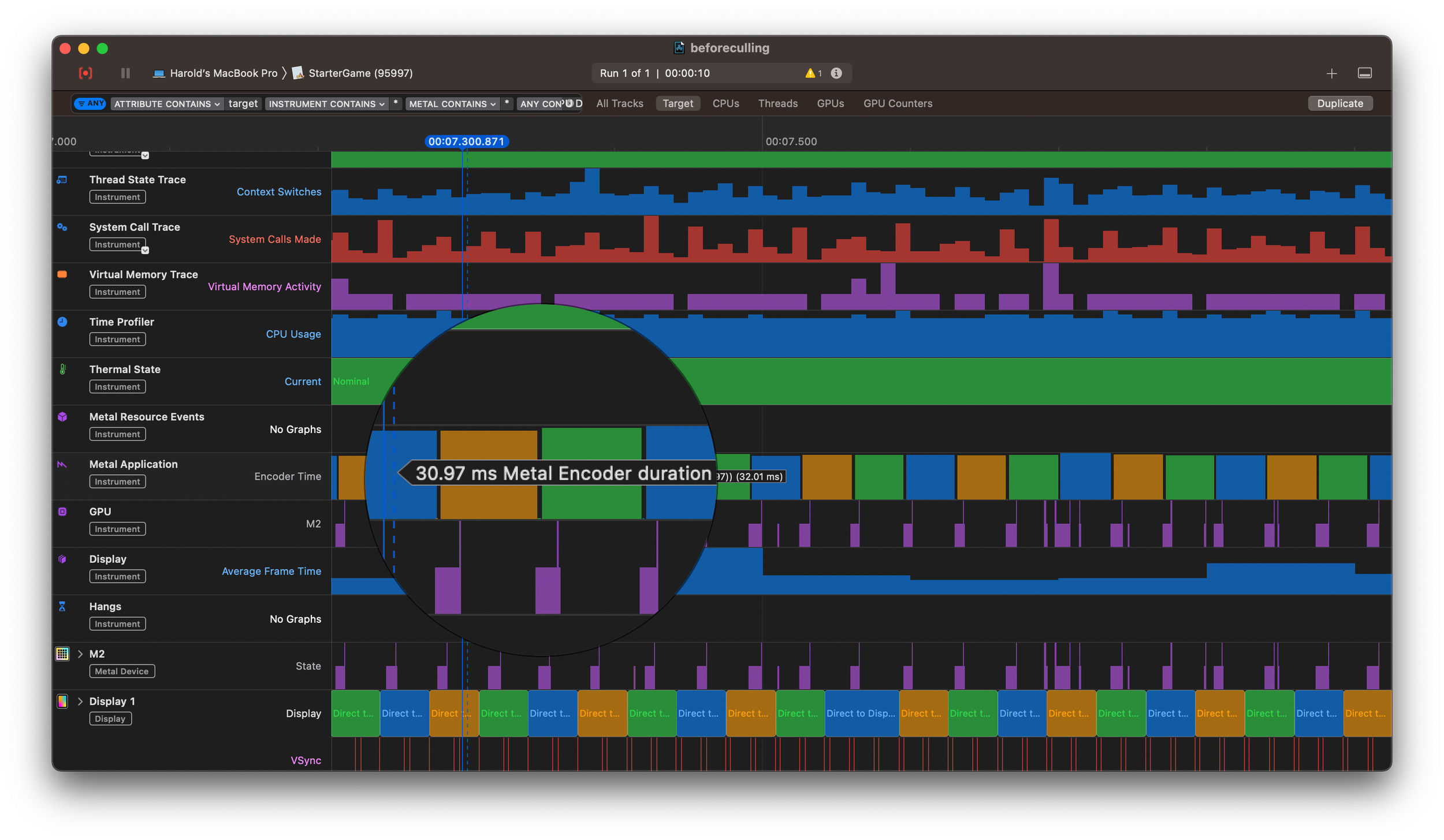This past couple of months have been amazing for the Untold Engine — from getting its first contributor and sponsorship to adding VisionOS support.
Let me tell you all about it.
Engine & Editor
You may recall that I had both the core and the editor integrated tightly in the engine. It worked nicely, but the coupling was going to give us headaches in the future.
Thanks to the effort of our first contributor miogds, the core of the engine and the editor are now de-coupled.
So, this is the new architecture of the engine:
- Core: Handles the runtime — rendering, physics, ECS, and all engine systems.
- Editor: A dedicated app for scene creation, entity manipulation, and asset management.
Untold Engine - Core
This separation makes development cleaner, more modular, and sets the stage for headless or custom integration workflows.
Additionally, the core engine will continue in its original repository UntoldEngine, while the editor now lives in a new, dedicated repo UntoldEditor.
Untold Engine Editor
Unit Tests & Workflows
I've also been working on making the Untold Engine repository more professional.
This includes adding unit tests, GitHub Actions workflows, and automatic formatting and linting.
My hope is that these improvements will make contributing to the project much easier and more reliable.
Website & Documentation
Another area of progress has been the new website and documentation.
The documentation site covers how to install the engine, explore the APIs, and contribute to development.
You can check it out here: Untold Engine
Each engine release will include its own version of the docs for consistent developer onboarding.
VisionOS Support
Lastly, the engine now compiles and runs on the VisionOS simulator — the first step toward supporting Apple’s Vision Pro platform.
However, this is still early support — the engine has not yet been tested on an actual Vision Pro device.
We’ve already received an issue report related to Vision Pro hardware, so if you happen to have one and would like to help debug, you’re more than welcome to contribute!
Thanks for reading.





